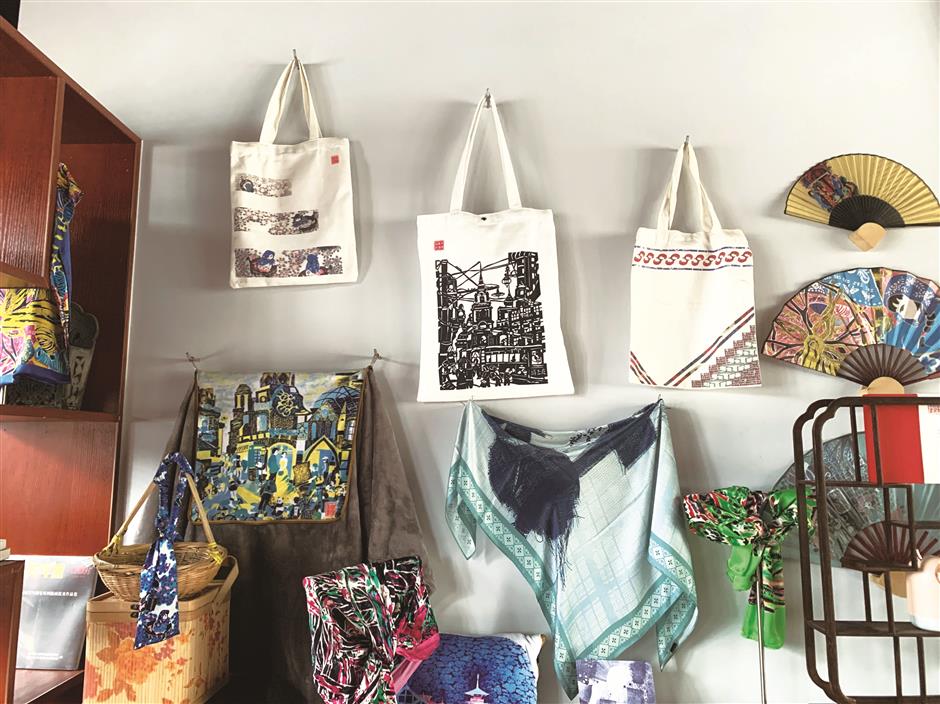Decades-old Chinese art form still strong

Gu Peilian, a 64-year-old farmer, recently saw her silkscreen block print painting be shortlisted for the National Exhibition of China's Farmer Paintings.
Gu Peilian, a 64-year-old farmer, never thought that her silkscreen block print painting would be shortlisted for the National Exhibition of China's Farmer Paintings – one of three works selected from Shanghai.
"I'm in luck," said the resident of Chedun Town with a big smile. "What I've depicted in my work, 'The Countryside is Full of Beauty,' is my birthplace, the place in the world with which I am most familiar."
Her picture depicts large patches of rice fields covered with golden ears of wheat, around which farmers drive tractors for a bumper harvest. Old villagers sit along the field chatting happily, while kids play hide-and-seek in the woods.
"I paint where I've grown up and what I've observed," Gu said. Born on the Huangpu River, she drew inspiration from nature, her daily life and childhood experience.
Captivating are the scenes she revives – the celebration of the harvest, farmers toiling in rice paddies, locals fishing in a pond, chasing a lost pig and weaving on a spinner.
One of the more common methods of creating a silk-screen stencil is through negative images. The image is printed on a transparent sheet and placed on the wet emulsion so only the uncovered emulsion dries, creating the stencil. One color requires one silkscreen block. That is to say, if a painting has five colors, it needs five blocks.
Painters belonging to the "primitive camp" use striking colors. Rather than exploring modern urban reality, traditional rural themes, such as fishing, cloth dyeing, spinning, and market scenes, are preferred. Figures and objects are drawn in a way that most people may consider childish, with straight thick lines, yet producing a strong visual effect.
Silkscreen block printing is a folk art popular in Chedun Town. In the 1980s the local government launched a program to teach techniques to farmers in order to carry forward the tradition and to provide a stimulating hobby for farmers to kill time during slack seasons.
Gu, who had never picked up a paint brush before, applied for the program in 1987. She still remembers her first work. "I drew a shrimp, swimming among a school of fish in water grass," she recalled. "It was based on my fishing experience with my father when I was eight." The painting was exhibited in a local art show.
Over the past three decades, Gu never gave up painting, and gradually found her artistic style. Her works feature bold colors and big-headed figures. Rural village life scenes are her forever topic. In her spare time, Gu strolls around her village taking photos for inspiration. "I paint for fun. I'm a farmer. This is my way of expressing myself," she said.
Chedun's silkscreen block printing reached its heyday in the early 1990s, but went downhill as the country underwent economic reform, during which a large number of local artists quit and found jobs in businesses.
Around 2009, the town set up a cultural office in hopes of reviving its folk arts. Today silkscreen block printing is not just a pastime for peasants, but is rather a serious form of art admired by many different walks of artists.
In 2013, the art form was listed as a part of Songjiang's intangible cultural heritage, receiving special protection and governmental promotion.
This March, Chedun Town Silkscreen Block Print Gallery was opened free to the public. Covering 600 square meters in a renovated century-old house, it showcases a wide range of silkscreen artwork by more than 20 local painters, from elders to young artists.

An entrance to Chedun Town Silkscreen Block Print Gallery

One of Gu's works featuring farm work
The gallery's backyard compound has a work studio. Visitors are welcome to venture into its darkroom to see how silkscreen blocks are made. "Each painting shows love of hometown, love of children, love of festivals, love of animals and love of work and chores," says Zhang Yuliang, head of the institution. "The art form is traditional Chinese but also a universal celebration of life."

In addition to their creative endeavors, artists at Chedun Town Silkscreen Block Print Gallery also develop cultural and creative products.
















